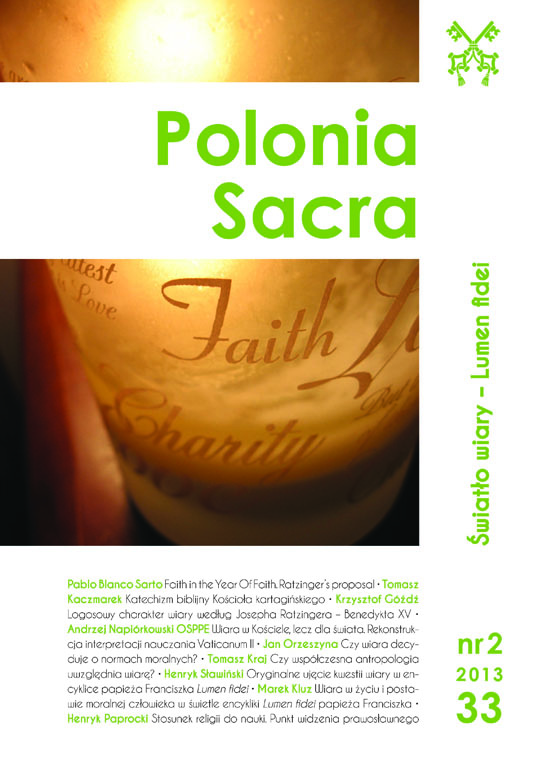Łaska w ikonach
DOI:
https://doi.org/10.15633/ps.375Słowa kluczowe:
łaska, ikona, kanon, ikonoklazmAbstrakt
The article brings the reality of the grace of icons in two respects: the first relating to the recipient and the second relating to the icon writer. Grace is the transforming reality “in the image and likeness of God”. It is received through a recipient’s personal prayer and life experience. The gift of writing icons, their reading and reception in a cultural context is also a grace. Knowledge and application of adequate painting techniques is included in the canon. Its aim is creating an appropriate image which is a true “window to another world’, to a reality already divinized. Icons must therefore meet certain conditions in order to be adequately helpful in prayer. They must also bring truly its recipient closer to Divine Persons, biblical events or scenes from the lives of the saints. Over the centuries, from the very beginning of Christian sacred art, through the turbulent period of iconoclasm, up to the present day, icons have retained a fundamental importance in the eastern Church, becoming almost a sacrament. In the western Church they suffered profound transformation, taking the form of holy pictures. They are liberated from the canons and techniques, depending only on the artist’s skills and fashions of the time. They play an assistant role in the liturgy and a decorative one in the architecture of temples.Pobrania
Opublikowane
2013-11-30
Numer
Dział
Artykuły
Licencja
Prawa autorskie (c) 2013 Monika Wąchocka

Utwór dostępny jest na licencji Creative Commons Uznanie autorstwa 4.0 Międzynarodowe.
Autorzy publikujący w czasopiśmie udzielają jego wydawcy zgody o następującej treści:
- Autor zachowuje autorskie prawa majątkowe do utworu, a jednocześnie udziela wydawcy czasopisma zgody na jego pierwszą publikację w wersji drukowanej i wersji online na licencji Creative Commons Uznanie autorstwa 4.0 Międzynarodowe oraz zgody na wykonywanie opracowań, w tym przekładów.
- Autor ma możliwość udzielania zgody niewyłącznej na opublikowanie utworu w wersji, która ukazała się w czasopiśmie (np. zamieszczenia go w repozytorium instytucjonalnym lub opublikowania w książce), wraz z informacją o jego pierwszej publikacji w czasopiśmie.
- Autor może umieścić swój utwór online (np. w repozytorium instytucjonalnym lub na swojej stronie internetowej) jeszcze przed zgłoszeniem utworu do czasopisma.
Jak cytować
Wąchocka, M. (2013). Łaska w ikonach. Polonia Sacra, 17(2), 203–218. https://doi.org/10.15633/ps.375

